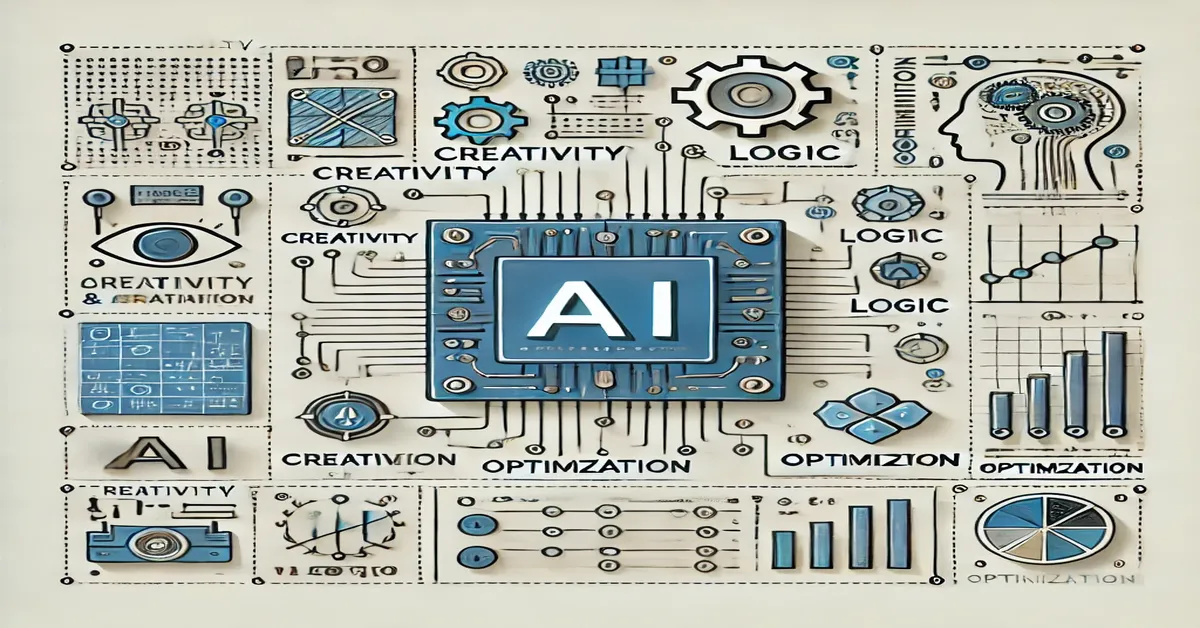In the world of AI especially with tools like ChatGPT crafting prompts is both an art and a science. Every word in a prompt influences how the AI interprets the request, impacting the quality, tone, and accuracy of the response. This guide explores the anatomy of a prompt, breaking down the essential elements to make your interactions with AI more precise, insightful, and rewarding.
Whether you’re a newcomer or a seasoned AI enthusiast, understanding prompt engineering can help you harness the full potential of AI, ensuring that it delivers the information you need in a way that’s clear, contextually relevant, and aligned with your objectives.
Why Prompts Matter: The Foundation of AI Responses
A prompt is more than just a question or a command; it’s a set of instructions that guides AI on what you want. Think of prompts as the foundation upon which the AI builds its response. A well-crafted prompt leads to answers that are insightful, relevant, and tailored to your needs, while a vague or ambiguous prompt may yield incomplete or confusing answers.
At its core, prompt engineering is about crafting prompts that are clear, specific, and directed, allowing the AI to provide responses that best match your expectations. With the right prompt, you can transform ChatGPT from a general assistant into a specialized tool that adapts to your unique requirements.
Essential Elements in the Anatomy of a Prompt
Several key components make up an effective prompt. When carefully combined, these elements can drastically improve the AI’s output, allowing for more reliable and customized responses. Let’s dive into each component in detail.
Specificity: The Power of Precision
Being specific in your prompt is crucial. AI models like ChatGPT interpret prompts based on the details provided, so the more precise you are, the better it can tailor its response. Specificity is particularly helpful for complex queries where general answers won’t suffice.
For instance, if you’re researching “the impact of renewable energy on urban development,” include these details in the prompt rather than simply asking about “renewable energy.” The more defined your prompt, the more aligned the AI’s response will be with your needs.
Clarity: Make It Easy to Understand
Clarity goes hand-in-hand with specificity. A clear prompt ensures there’s no room for misinterpretation. Avoid jargon or overly complex language unless necessary, as simple and direct prompts tend to yield the best results.
For example, if you want to learn about the health benefits of exercise, a prompt like “List five health benefits of regular exercise for mental well-being” is clear and leaves little ambiguity, helping the AI focus on the specific area of interest.
Contextual Information: Adding Depth to Your Prompt
Context allows the AI to better understand the nuances of your request. Adding background information or specifying the intended audience can help the AI shape its response to match your expectations.
Consider this prompt: “Explain the basics of quantum computing for a high school science project.” Here, the phrase “for a high school science project” gives the AI a sense of the complexity level and audience, resulting in a response that is appropriately simplified yet informative.
Tone and Style: Setting the Right Voice
The tone and style of a prompt are key to shaping the “voice” of the AI’s response. Whether you’re looking for a casual tone, professional language, or a humorous twist, setting this expectation can ensure the AI aligns with your preferred style.
If you’re asking for a product description, you might say, “Write a fun, engaging description of a new smartwatch for a young audience.” This helps the AI strike the right balance between informative content and an upbeat tone.
Desired Outcome: Be Clear on What You Need
Sometimes, simply stating the end goal can help AI give a more effective answer. If you’re drafting a blog, ask for an “outline for a blog on sustainable travel,” and if you need ideas for a creative project, specify, “Suggest three unique ideas for a sci-fi story.” By defining the outcome, the AI will align its response accordingly.
Avoiding Ambiguity: Steering Clear of Misinterpretation
Ambiguity can confuse the AI, leading to responses that don’t meet your needs. To avoid this, structure your prompts to eliminate any potential confusion. For example, instead of asking, “Can you explain climate change solutions?” you might specify, “Can you explain three effective solutions to combat climate change?”
How to Structure Prompts for Maximum Impact
When crafting a prompt, think of it as creating a small blueprint for the AI. Here’s a simple structure that can help maximize the impact of your prompts:
- Start with the Objective: Clearly state the main topic or question.
- Add Specific Details: Include any relevant keywords, topics, or specifics you need.
- Set the Context: Provide background or specify the audience.
- Choose the Tone and Style: Define whether you want formal, conversational, persuasive, or another tone.
- Specify the Format (if needed): If you need a list, summary, or paragraph, mention it.
Using this structure can make your prompts more efficient, guiding the AI to deliver responses that match your expectations accurately.
Examples of Effective Prompt Engineering
Here are a few examples showing how to create well-structured prompts for different needs:
- Simple Information Retrieval: “Summarize the causes of the French Revolution in a few sentences for a high school history assignment.”
- Creative Writing: “Write a suspenseful opening paragraph for a thriller novel set in a deserted town.”
- Professional Tone: “Draft a formal email response to a client inquiry about our services, emphasizing professionalism and clarity.”
By following these examples, you can create prompts that give you precise, useful, and contextually aligned answers.
Advanced Prompting Techniques for Enhanced AI Interactions
For those looking to go beyond basic prompting, here are a few advanced techniques:
Multi-Part Prompts
Break down complex prompts into smaller, manageable sections. For example, “Explain the key features of blockchain technology, and then discuss its potential in healthcare applications.” This approach helps AI address multiple aspects without losing focus.
Iterative Prompting
Iterative prompting involves asking follow-up questions to refine the AI’s response. Start with a broad question, and then narrow down with each prompt, such as: “Explain blockchain technology.” Follow up with, “How can it improve data security in healthcare?”
Hypothetical Scenarios
Hypothetical scenarios can be a powerful tool for exploring ideas creatively. For example, “Imagine a world where AI handles all public transportation. Describe how daily life might change.” This type of prompt lets the AI dive into imaginative storytelling or speculative analysis.
The Role of Prompt Engineering in AI Ethics and Responsibility
With great power comes great responsibility. Understanding prompt engineering also means recognizing the ethical considerations involved. Misleading or biased prompts can result in responses that reflect or even amplify those biases. By crafting neutral, fact-based prompts, we can encourage AI to provide balanced and accurate information.
Moreover, it’s important to ensure prompts are clear and fair when using AI for decision-making or informative content, as well-crafted prompts are less likely to generate misunderstandings or propagate inaccuracies The Anatomy of a Prompt.
Conclusion
Mastering the anatomy of a prompt can significantly elevate your interactions with AI, making it a valuable tool for learning, productivity, and creativity. By focusing on clarity, specificity, and context, and by utilizing advanced techniques like multi-part and iterative prompting, you can unlock richer, more customized AI responses The Anatomy of a Prompt.
As the field of prompt engineering evolves, understanding the mechanics of prompts will remain a crucial skill for anyone interacting with AI. With practice, you’ll be able to leverage AI’s capabilities effectively, ensuring that it meets your needs in increasingly meaningful ways The Anatomy of a Prompt.
FAQs
- What is prompt engineering?
Prompt engineering is the skill of crafting precise, effective instructions for AI to yield desired responses. - Why is specificity important in prompts?
Specific prompts give AI clearer directions, resulting in more accurate and relevant responses. - How does context influence AI responses?
Context helps AI understand the background or audience, allowing it to tailor responses appropriately. - Can tone and style be set in a prompt?
Yes, defining tone or style in a prompt ensures the AI adopts the desired voice. - What is iterative prompting?
Iterative prompting is a technique of refining AI responses through follow-up questions or clarifications. - Why is prompt engineering important?
It enables better control over AI outputs, improving relevance and accuracy in responses. - Are there ethical considerations in prompt engineering?
Yes, neutral, unbiased prompts promote fair, responsible AI responses.







